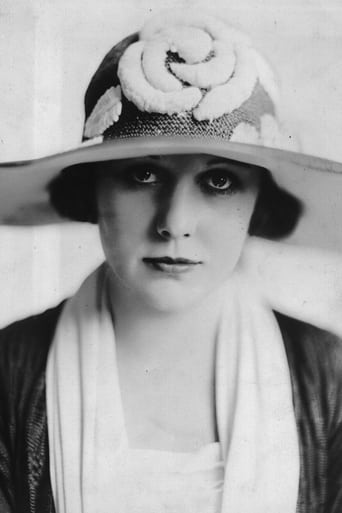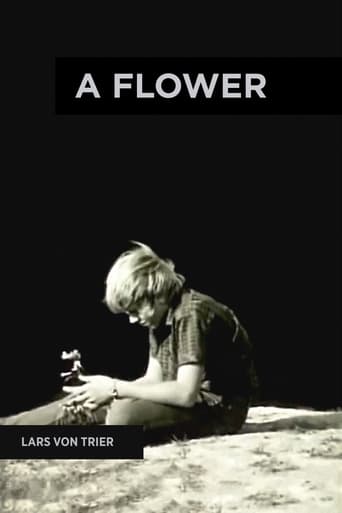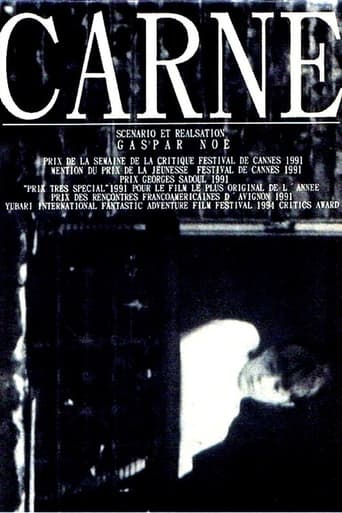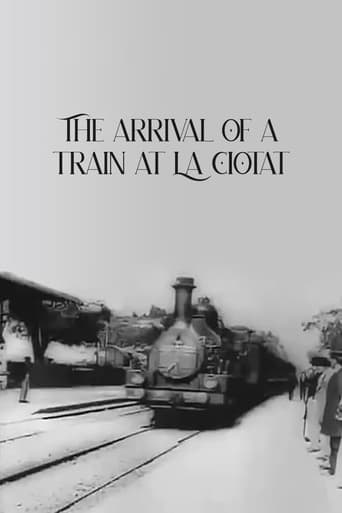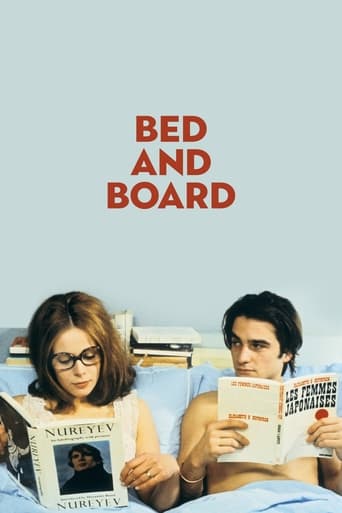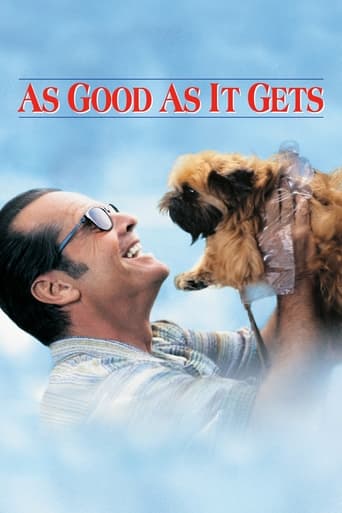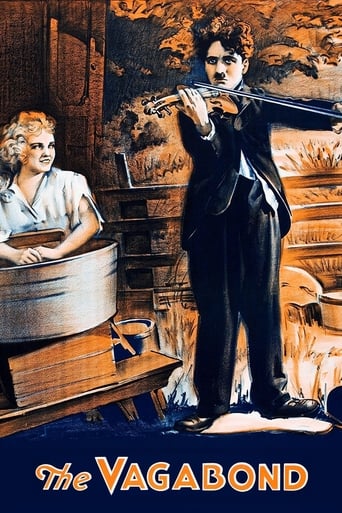
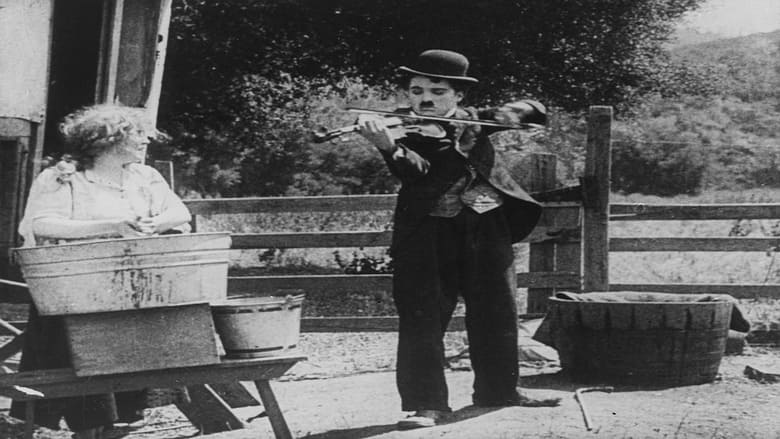
The Vagabond (1916)
A tramp tries to earn money by playing the violin, but he’s soon facing off against the jealous competition.
Watch Trailer
Cast


Similar titles
Reviews
The Worst Film Ever
the audience applauded
One of my all time favorites.
This is a dark and sometimes deeply uncomfortable drama
In my opinion, "The Vagabond" is Charlie Chaplain's best. He doesn't go around kicking people in the bum or basically being a jerk like he is in just about all of them. After out-witting some musicians when they all choose to play in the same site, Charlie takes his violin and goes on down the road. He runs into Edna Purvance and starts to play his instrument. Edna was captured by gypsies as a little girl. An earlier scene shows her mother sighing and looking at her picture. Edna likes the music and Charlie eventually rescues her from the gypsies. He gets the wagon well down the road. The next morning, as Charlie is gathering breakfast, he sends Edna to get some water and she runs across an artist. The artist paints her. Her mother sees the picture in a gallery and the artist tells her where he found her daughter. There's a reunion at the wagon. Charlie turns down some money the mother offers her and they all leave with Charlie by himself. Edna realizes she does have regards for Charlie, comes back and gets him and they drive away. I thought it was sweet and so much better than a lot of his shorts!
By the time he made the Vagabond, Charlie Chaplin was not just the most popular comic on the screen, he was a fully fledged hero of cinema. It seemed that, so long as he continued to be funny, he could do no wrong, and people would always want to watch him.And just the opening shot of the Vagabond shows Chaplin's confidence in his own familiarity and popularity. He appears here as just a pair of feet below a saloon door, his gait alone being enough for audiences to recognise him. He then walks to the back of the set, to a point squeezed between the wall and the edge of the frame, while some other musicians set up in the foreground. The framing provided by the wall, plus the fact that the little tramp is inherently interesting to us as an audience, mean that our focus is upon him. These are not just good approaches for comedy, they are professional cinematic techniques that any director could put to use.Then, as usually happens, a plot begins to emerge from this situation, but the Vagabond's is a plot with an important difference. Not because the story is extremely poignant (so were those in The Tramp and The Bank) or neatly structured (as was that of Police), but because Chaplin treats the dramatic scenes purely as drama. He backs up the subplot with a few completely straight scenes, with naturalistic acting and camera moves that would have been distracting in a comedy scene but give added impact here. The slow dolly back from Purviance's portrait, beginning with just the picture then gradually revealing its setting and the growing crowd of admirers, really demonstrates Chaplin's competence and understanding as a director.But what is amazing here is the ease with which Chaplin and his cast are able to slip so freely between comedy and drama. Charlotte Mineau gives what must be her best performance, and Edna Purviance shows a greater expanse of her range than we have hitherto seen. Most incredible of all is the acting of Charlie himself, his face a little hard to read under the toothbrush moustache, but doing some carefully nuanced work with gesture and body language. Lastly an honourable mention goes to Leo White, one of my all-time favourite Chaplin co-stars, in his last ever appearance with Charlie. He's not easy to recognise here (he's the gypsy harridan!), but doing a nice and very funny job as always. This wasn't the end for White though; he had various supporting roles through the rest of the silent era, and has a blink-and-miss-it bit part in virtually every Warner Brothers picture of the 30s and 40s.The only flaw in the Vagabond is the final twenty seconds, a vulgar and forced happy ending, although it is done smoothly enough so as not to ruin the overall feel of the picture. Even with this coda in place, we are left with a sense of satisfaction, of a story well told. And while Chaplin had done several strong and emotionally involving shorts before this, the Vagabond is perhaps the first one in which you could take out all the comedy and still be left with a decent drama. It was at this point that the little tramp really gained the stature to become a leading man.
Monday September 10, 7:00 pm, The Paramount Theater, Seattle A clear departure from his work with Keystone and Essanany, Charles Chaplin's third production for Mutual Film Corporation, The Vagabond (1916) demonstrates a turn toward the more complex story development and balanced content found in early features such as, A Dog's Life (1918) and The Kid (1921).A saloon violinist (Chaplin) plays outside a small establishment, then solicits the patrons who mistake him for a member of the band also playing. He flees the ensuing altercation and discovers a waif, The Gypsy Drudge (Edna Purviance), held captive by cruel gypsies on a country road. He plays for her until the Chief (Eric Campbell) appears and beats them both. Charlie rescues the girl who is later discovered by a traveling artist. When her portrait is seen my her mother in a gallery the girl is rescued. Charlie is left alone, but the girl realizes her true love and returns for him.
This must have seemed like a real change-of-pace from Chaplin when it first came out, since it has a much different tone than almost any of his previous short features. It has a few funny moments, but this time humor is not the emphasis - except for the familiar presence of Charlie's usual tramp-like character, it feels more like one of the short melodramas from the same era, rather than a comedy. As "The Vagabond", Charlie performs a few antics, mostly towards the beginning, but then gets involved in the life of a young woman in distress (Chaplin regular Edna Purviance), and the story turns more serious. It is not one of his best films, but it is always watchable, and is quite interesting as a fore-runner of the way that Chaplin would combine slapstick and humanity to much greater effect in the masterpieces that he would go on to create some years later.



